Terashita Kannon Museum
The Terashita Kannon Museum exhibits many documents and collections related to Terashita Kannon and Ushioyama Shrine.
Here we introduce some of the collection.


The Terashita Kannon Museum exhibits many documents and collections related to Terashita Kannon and Ushioyama Shrine.
Here we introduce some of the collection.
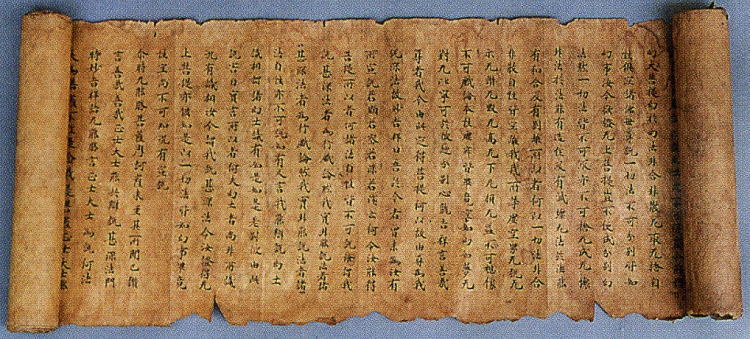
The Great Perfection of Wisdom Sutra is a 600-volume translation of a vast number of Buddhist scriptures that the monk Xuanzang, who appears in Journey to the West, spent 16 years bringing back from India to Chang'an during the Tang Dynasty.
The Heart Sutra is said to be a summary of this enormous Great Perfection of Wisdom Sutra.
In the southern region of Aomori Prefecture, there are several Great Perfection of Wisdom Sutras related to Minamoto no Yoshitsune that remain.
At Koda Hachiman Shrine in Hachinohe City, there are about 300 volumes said to have been written by several of Yoshitsune's retainers, and at Konakano Suwa Myojin Shrine there are 23 volumes said to have been written by Benkei.
Several other places where similar legends remain have been confirmed in Iwate Prefecture, Fukushima Prefecture, Tokyo, and other areas.
A Great Perfection of Wisom Sutra, said to be in Benkei's own handwriting, is also preserved in Terashita, Hashikami Town.
It is approximately 25 centimeters wide and 13.3 meters long, and at the end is written "Great Perfection of Wisdom Sutra 576 Volume". This is probably the 576th volume of the 600 volumes of the Great Perfection of Wisdom Sutra.
In the early Showa period, folklorist and local historian Koikawa Junjiro introduced this sutra as follows: "In a house in front of the gate of what is now Ushioyama Shrine, owned by the Kuwabara family, who were formerly the abbot of Omotsu-ji Temple in Terashita, Hashikami village, there is a volume of Benkei's sutra. In the past, it was said that drinking the words of this sutra would cure illness, and the marks where they had been cut out can still be seen. The cut words have also been wrapped up in paper".
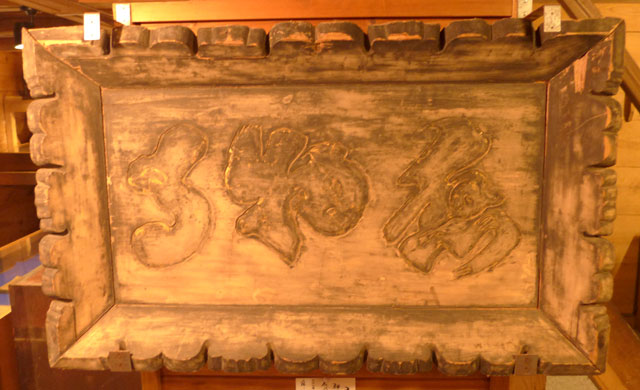
This is a plaque with the words "Omotsu-ji Temple" written on it.
This is the best evidence that Omotsu-ji Temple was a temple in Terashita area.
It is said that the monk Gyoki founded Omotsu-ji Temple on land below the temple over a period of five years, starting in 724. It was later destroyed by a forest fire caused by a lightning strike in 1242, and rebuilt by the monk Kozan in 1246.
Some of the items in the Terashita Kannon Museum's collection are designated cultural properties by Hashikami Town.
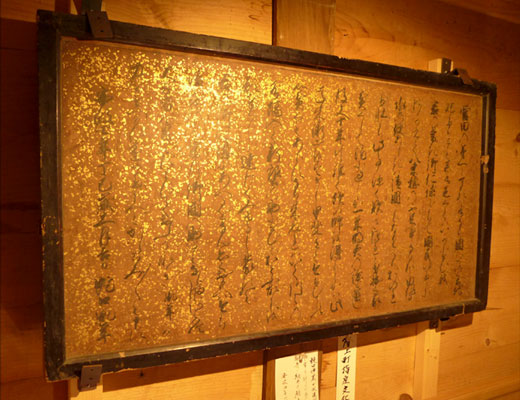
A prayer plaque submitted to Terashita Kannon by Hachinohe feudal lord Hebiguchi Banzo Tanetoshi when he undertook a water development project.

A record of the uprising of over 20,000 farmers in the spring of 1834.
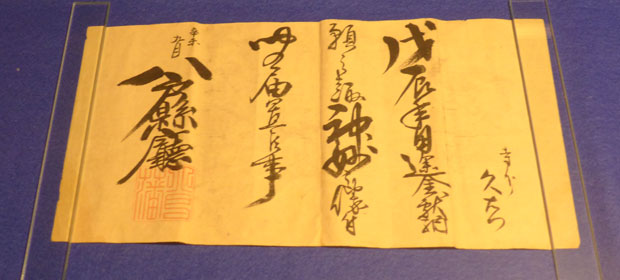

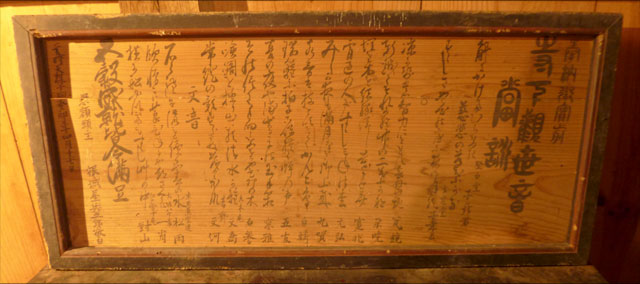
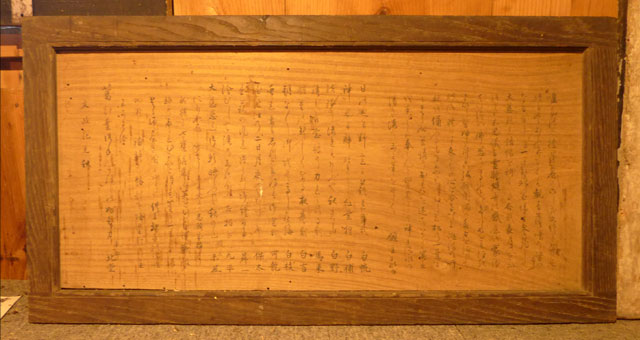
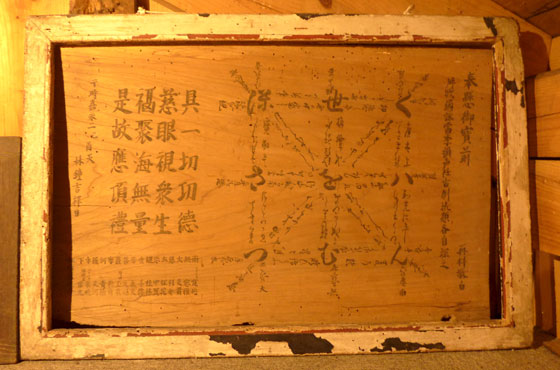
"Haikai" refers to a form and work of Japanese literature that flourished during the Edo period. It branched off from Renga, a style popular in the mid-Heian period in which a single poem is composed of alternating 5-7-5 opening verses and 7-7 side verses, to increase playfulness, and 5-7-5 haiku also follow this line.
Haikai is said to have first been introduced to Hachinohe in 1758, when Funakoshi Sanzo, a samurai of the Hachinohe clan, taught the Teitoku school of haikai to Nanbu Nobuoki, the fifth lord of the Hachinohe clan. It is said that it became popular after Nanbu Nobufusa, the 7th lord of the Hachinohe domain, obtained a selector's license at his Edo mansion in 1783 and called himself Gobaian Hanri. They held grand haiku gatherings in the new year, and through haikai they interacted with feudal lords, merchants, painters, and others, and eventually spread to feudal samurai, monks, ascetics, and townspeople.
Since then, haikai in Hachinohe has been divided into five schools, and three of these, Seisouan, Hyakujoken, and Kagetsudo, are still practiced today.
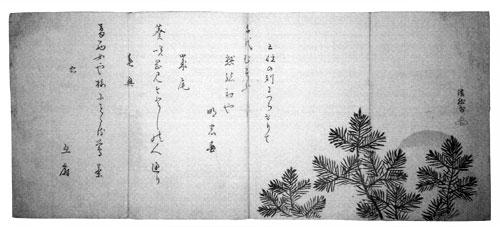
New Year's Day 1811
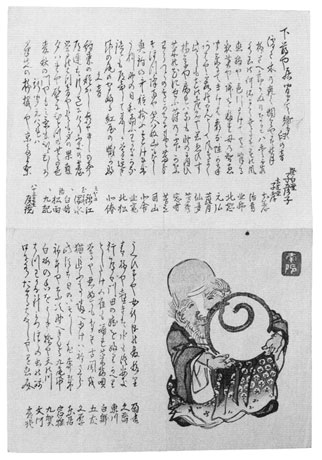
1845
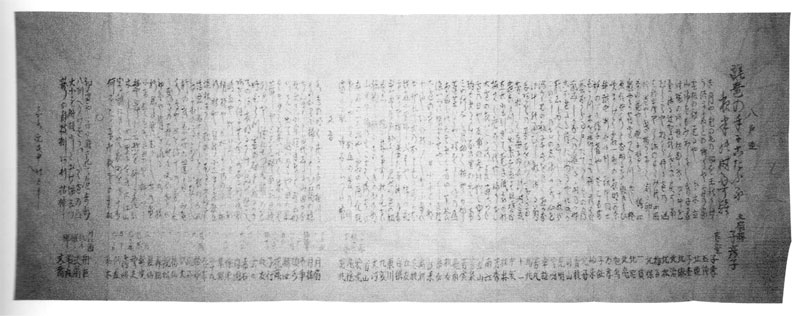
1848
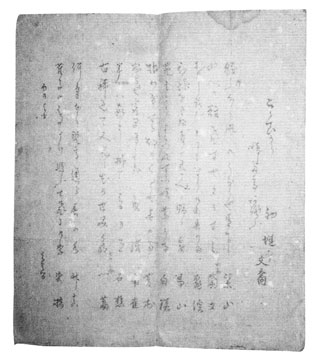
1849
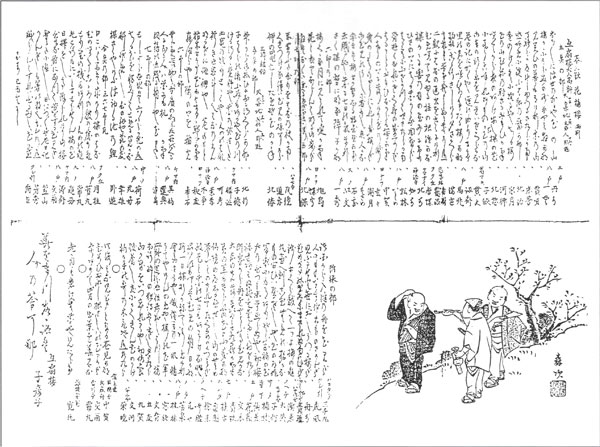
1849
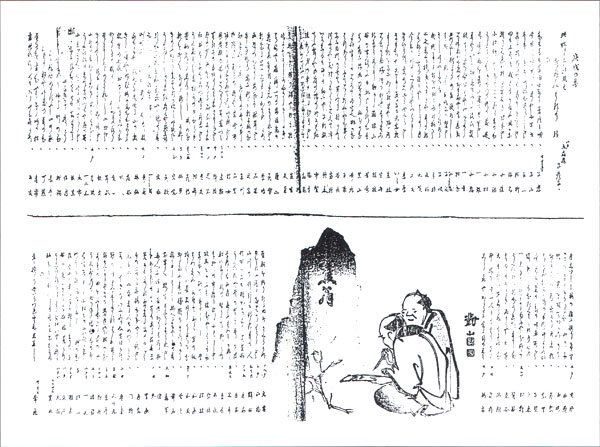
1850
We will show you the location of Terashita Kannon Museum.
8 Akabonai Terashita, Hashikami-cho, Sannohe-gun, Aomori Prefecture, Japan